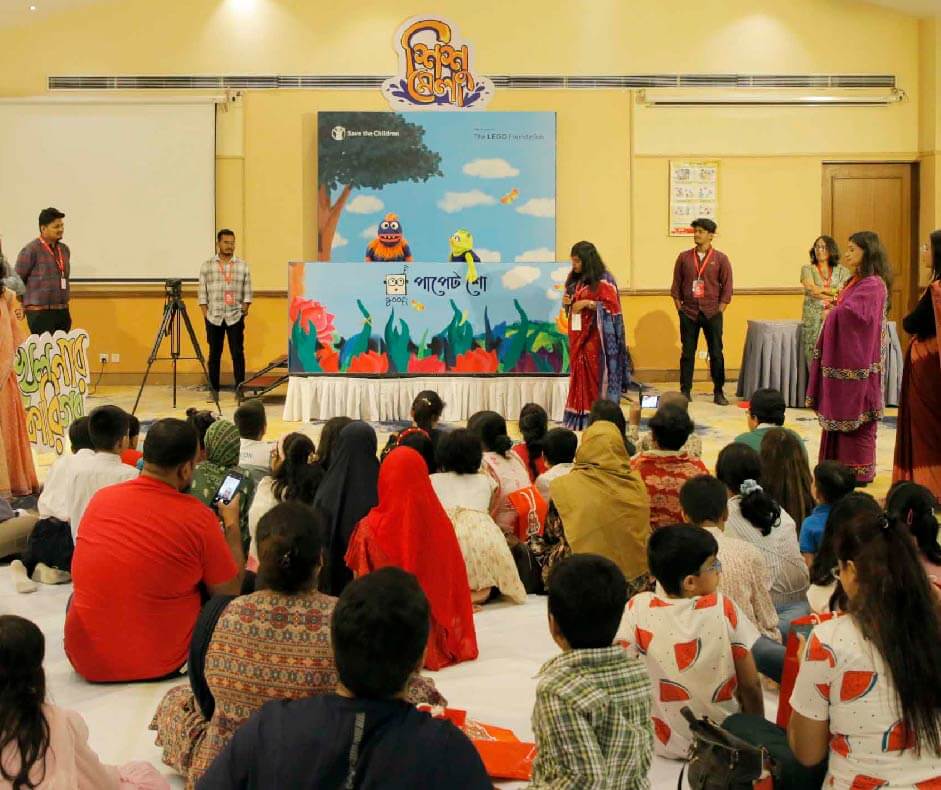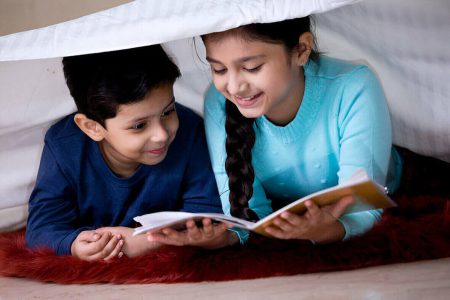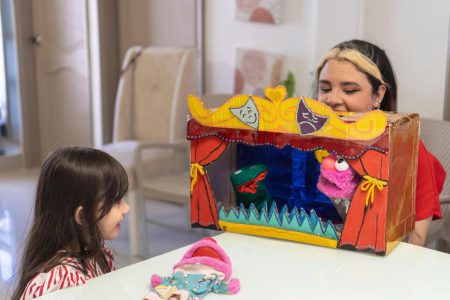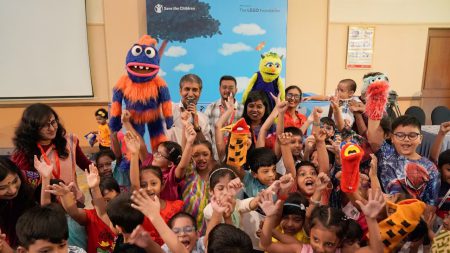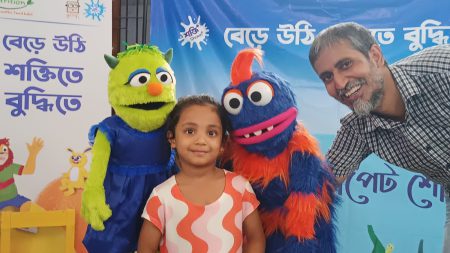Puppetry is an ancient art form which continues to fascinate young audiences. It has a unique combination of entertainment and education. The most important thing about puppets is that they represent human beings. Puppet theater is a powerful tool to spread valuable messages throughout a society. It is a crucial way of social development. This culture is renowned for a long time across various regions.
World Puppet Theatre Day has been celebrated on March 21st since 2013. Puppetry was once the most popular form of entertainment in villages, especially for children. Through children puppet theater kids can learn valuable lessons about friendship, courage, and the importance of being kind.
Understanding Children's Puppet Theater
Children’s puppet theater is a vibrant art of storytelling, acting, and visual arts combined. Puppet theater is a form of live performance that involves the manipulation of puppets. These puppets often resemble humans, animals, or mythical creatures to tell a story or perform various scenarios. The puppet dance is commonly known as “Putul Nach” in Bangladesh.
Puppetry is believed to have its roots in ancient cultures. Since the beginning of civilization there has been a connection between humans and puppets. Children’s puppet theater has a lot to offer in terms of entertainment, education, and cultural expression.
Cultural Expression
Puppetry is deeply rooted in tradition. Puppet theater reflects cultural values, beliefs, and historical narratives. Through puppet theater, children are introduced to the depth of their own heritage. They can also learn how diverse the world’s cultures are.Various puppetry traditions reflect the unique heritage, folklore, and traditions of different societies. Each cultural tradition enriches puppet theater with its own distinct flavor.
Entertainment
Puppet theater is a very amusing option for both learning and enjoyment. Children’s puppet theaters hold puppet shows with colorful sets, engaging characters, and lively music. Puppet shows capture the imagination of children and make them laugh & wonder. At puppet shows children often transform from audience into participants and engage directly with the storyline.
Education
Beyond just giving entertainment, puppet theater is a powerful tool for the education of children. The puppet shows can simplify complex ideas and make them accessible to young minds. Puppet theater teaches children morality, social behavior, and environmental awareness in a fun and engaging way. Through puppet theater children are actively involved in the storytelling sessions and encouraged to explore, question, and discover.
Family-Friendly Puppet Performances

Goofi World is one of the best educational platforms for children. The Goofi World team is trying hard to create a brighter future of today’s children. They are trying to help kids to get more creative and empathetic. Their goal is to cultivate creativity, problem-solving abilities, empathy, and moral values in children through engaging and innovative learning experiences. Goofi World organizes interactive puppet shows for children. They perform at various institutes to make learning more enjoyable towards children. Goofi World knows about the education of children. So, they are trying the most innovative ways to educate children and make learning easier & enjoyable to them.
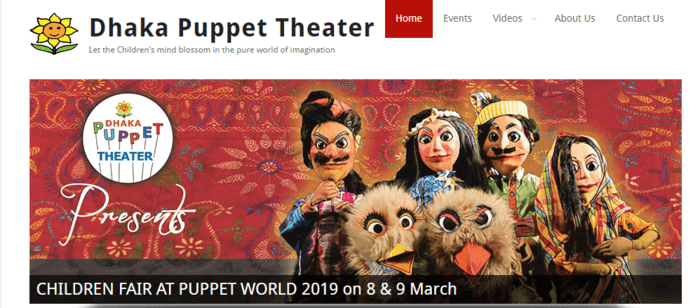
Dhaka puppet theater has been working with puppets for over 15 years. They have performed in many school shows and participated in international puppet festivals. They have their own puppet based drama for television. Dhaka puppet theater introduces the use of puppets in a monotonous education system through arranging workshops. The team is doing their best to popularize the puppet theater as an art form.

BITA noticed that in Chattagram child rights are not ensured properly due to lack of information, lack of appropriate media & tools for expression and absence of cultural interaction among children. There are no other alternatives except cultural tools for spreading information. They have proved that puppetry is a powerful medium for children’s communication and social engagement, utilizing natural and recycled materials along with traditional sounds and music.
After recognizing its potential to drive social change, BITA has created a comprehensive puppet theater manual for children. This guide, structured for an 8-day workshop totaling 50 hours, includes 27 sessions targeted to empower teenagers and youth. Through this innovative approach, children are now actively spreading awareness about child sexual abuse, identifying offenders, and discussing the protective roles of parents, community members, and other responsible parties.
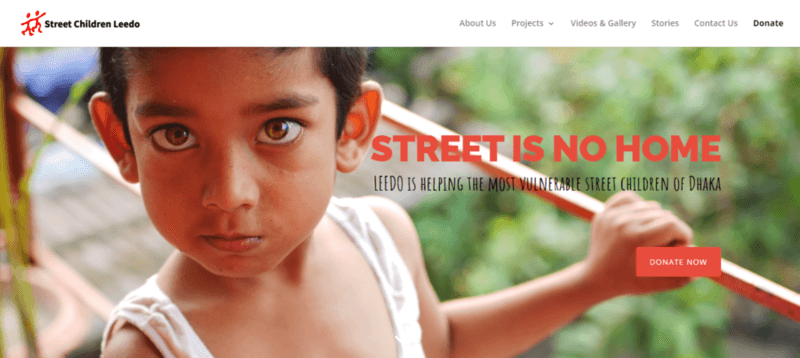
LEEDO is working for the safety of street children. The organization was founded in 2000 by a group of educated social and human rights activists and educators. They understand the power of puppet plays to spread important messages. LEEDO organizes puppet shows to enlighten children about the lives and rights of street children, as well as their health and safety. The purpose of these performances is to increase awareness of and support for the welfare of these vulnerable children. LEEDO understood that puppets are the representation of human beings and have its roots in ancient cultures.
Types of Children's Puppet Shows
Children’s puppet shows present a variety of appealing performances. Let’s see some of the most popular types of children’s puppet shows that bring joy to children.
Hand Puppets
Hand puppets are the most traditional and widely recognized form of puppetry. They are also known as “Glove Puppets”. Here, puppets are operated by a puppeteer’s hand placed inside the puppet’s body. They are very engaging and particularly effective for storytelling. Hand puppets come with a very simple design that allows for a wide range of movements and expressions. They can represent various playful animal characters, beloved storybook heroes and many other imaginary things.
Finger Puppets
Finger puppets are the miniature version of hand puppets. They are very delightful in their detail and easy to manipulate. Each finger becomes a character which allows to play on a smaller scale. With just a wiggle of the fingers, these little puppets come to life. They are particularly appealing for their portability and the cozy feeling they create.
Marionettes
Marionettes are also known as “String Puppets”. When a puppet is controlled by strings from above, it is called a marionette.A puppeteer requires real skills to manipulate marionettes with strings and make them dance, twirl, and glide across the stage with grace and precision. String puppets represent classic fairy tale characters and whimsical creatures of fantasy with their lively movements and expressive gestures. Marionettes enchant audiences of all ages with their delicate and string-guided dance.
Shadow Puppets
This form of puppetry is known for its artistic and dramatic play of light and shadow. Shadow puppeteers craft stunning shadows using flat, cut-out figures placed against a backlit screen that gracefully swing and dance. Shadow puppets are often accompanied by music and narration which provide a magical and mysterious experience.
Rod Puppets
Puppeteers manipulate rod puppets with rods attached to their limbs or body. There is usually a central rod that supports the head and two small rods control the arms. The rod puppets first appeared in Russia in the early 1920s. This type of puppetry is appealing for its dynamic performances and the apparent interaction between the puppet and puppeteer.
Exploring Puppet Plays Specifically for Kids
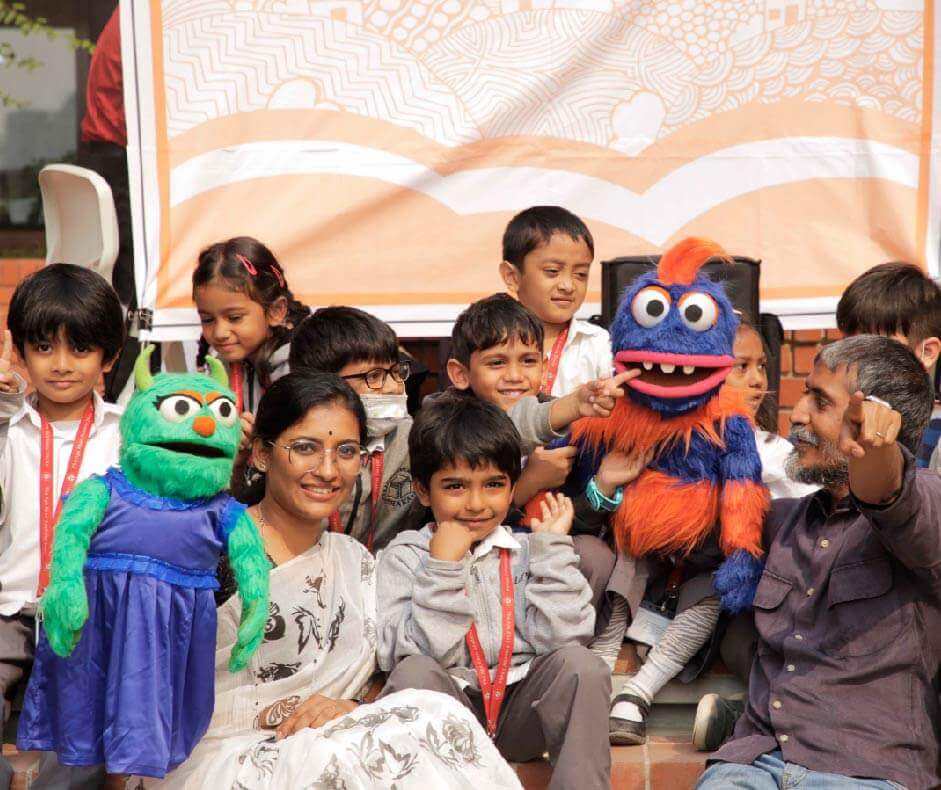
Puppet plays are a fun way for children to nurture their emotions. Puppet play stands out as a gateway to a child’s imagination. They help children in entertainment, storytelling, and knowledge sharing. Puppet plays serve as a powerful teaching tool for early education periods. Children are more engaged in learning when they are having fun.
Puppets can act as role models for behavior and emotional improvement of children. Kids often communicate with more confidence when talking to a puppet. It breaks the barriers of shyness and boosts communication skills. There are themes, characters, and interactive storytelling techniques maintained in puppet plays for kids.
Themes and Characters in Children's Puppet Plays
- Adventure and Exploration: Puppet plays can take children on grand adventures. An adventure on a distant land or magical realms where a wise old owl is sharing words of wisdom or a mischievous monkey causing havoc in the jungle.
- Friendship and Cooperation: Stories of puppet plays often focus on the value of friends that working together can overcome challenges. It’s a way to teach kids social skills and the importance of community.
- Morality and Ethics: Puppet plays introduce moral lessons such as the importance of honesty, kindness, and respect for others. The characters in these plays are typically designed to capture the imagination of children.
- Anthropomorphic Animals: Human-like talking and acting animals are frequently used as heroes in puppet plays for children. This gives kids a meaningful method to learn about various personalities and life lessons.
- Mythical Creatures: There can be imaginary dragons, fairies, and other mythical creatures that add an element of magic and mystery.
- Everyday Heroes: Puppet plays represent some characters like firefighters, doctors, or teachers. This helps children understand various roles in society and inspire them to think about their own aspirations.
Storytelling Techniques in Children's Puppet Plays
- Interactive Elements: Puppeteers often invite children to participate in the story through questions, responses, and actions.
- Musical Integration: Songs and rhythmic elements enhance the narrative and make the content more memorable and enjoyable.
- Visual Storytelling: Vibrant colors, expressive puppets, and lively scenery create a visually engaging environment that keeps children’s attention.
Educational and Developmental Benefits of Puppet Plays
- Puppet plays inspire imagination and encourage creative thinking.
- Playing with puppets introduces new vocabulary and improves verbal expression.
- Children learn to recognize and describe their emotions.
- Puppetry teaches social behavior and community values.
- Various plots in puppet plays improve problem-solving skills and critical thinking.
- Diverse puppet characters and stories introduce various cultures.
- Ethical themes in puppet plays provide important life lessons.
- Interactive puppetry activities can develop hand-eye coordination.
- Puppet plays inspire children to create and tell their own stories.
Conclusion
Puppet plays are not just entertainment shows for children. They are vibrant stories that improve imagination, creativity, and cultural appreciation. A children puppet theater provides the chance to acquire this creative experience for kids. The art of puppetry is vanishing from our society due to lack of acknowledgement.
Our kids today know a very little about this masterpiece. We should recognize the capabilities of puppetry and preserve this cultural gem. So, continue to explore the diverse world of puppetry by attending a local puppet show with your children or let them create their own puppet adventures at home.

